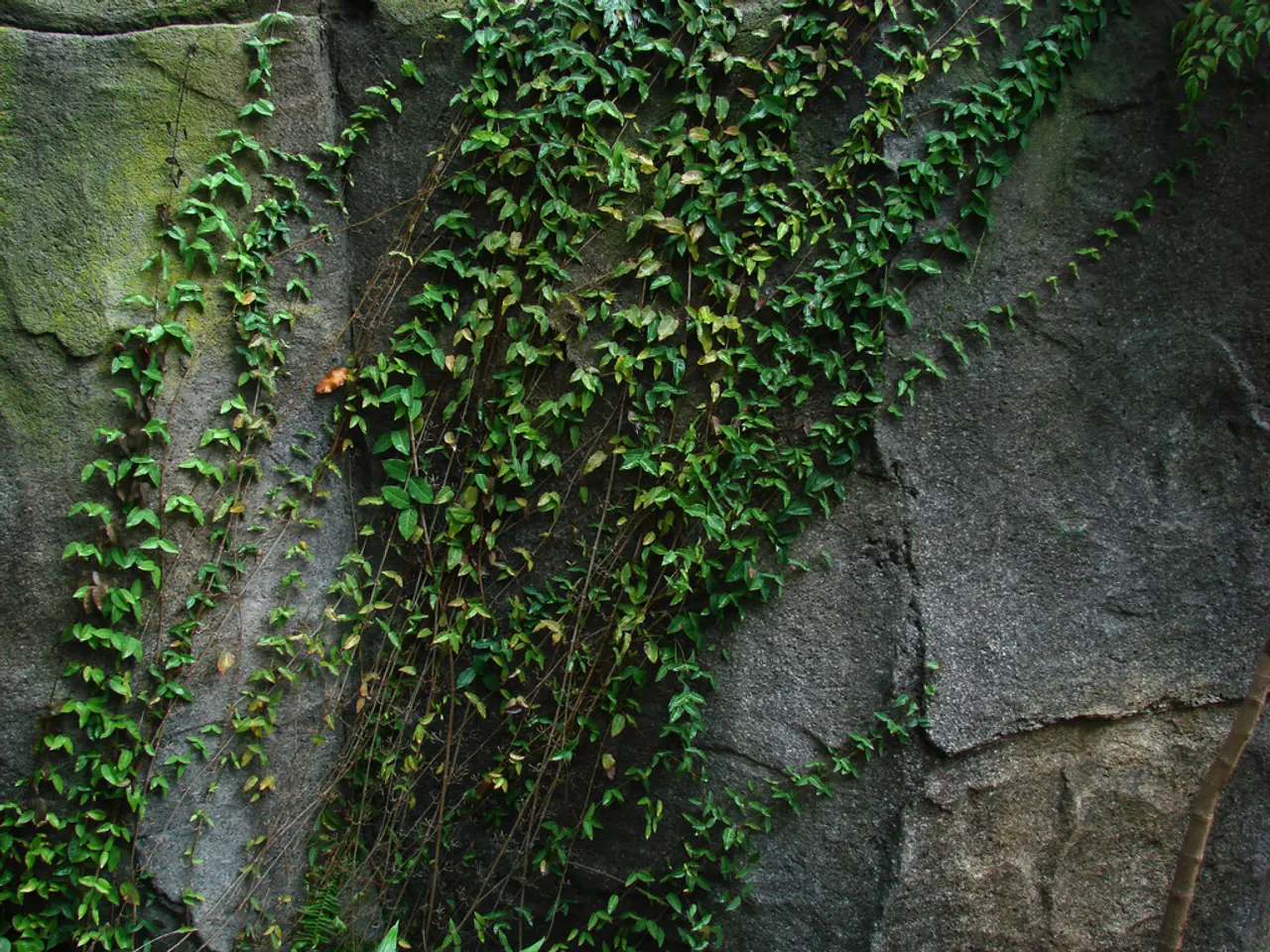Reducing daily plastic consumption through bioplastic: findings from a research study
In the heart of central Vietnam, a groundbreaking research initiative is underway at the University of Đà Nẵng-University of Technology and Education. This project aims to combat plastic pollution by developing bioplastic from Cottoni Seaweed (Kappaphycus alvarezii) and wastewater from local aquatic farms.
The city, grappling with a daily waste disposal of over 1,000 tonnes, including more than 22% plastic, is setting a target to limit waste dumping to under 20% of the total daily amount. This ambitious goal is a significant step towards a cleaner and greener future for the region.
The daily operation of an aquatic farm on 4,000sq.m often results in the release of 4,000 cubic metres of untreated wastewater. However, this farm has the potential to recycle its waste by growing seaweed, which not only purifies the water but also serves as a key material source for bioplastic production.
The seaweed, rich in organic nutrients from the wastewater, is harvested and processed to extract carrageenan, a natural polysaccharide used as the main ingredient for making bioplastic. This method offers a sustainable alternative to starch-based decomposable plastics, which could potentially compete with food resources, and commercial decomposable plastic bags that leave microplastic residues in soil.
The bioplastic developed by the research group could serve as an alternative solution to fossil fuel-based plastics and significantly reduce plastic waste and hazardous microplastic pollution. Initial prototypes, such as bioplastic bags, have been successfully created in laboratory settings. Future plans aim to advance bioplastic applications beyond packaging into high-tech industries, targeting long-lasting, environmentally friendly materials.
Moreover, the research group is collaborating with aquatic farms and manufacturers nationwide to start commercial production of the bioplastic by the end of 2025 or early 2026. The team is also exploring high-value bioplastic devices for electronics and high-tech industries.
The city's wastewater management remains a critical challenge, with leaks at Khánh Sơn dump being addressed through a vetiver (Vetiveria Zizanioides) grass-based system. Additionally, a bio-based waste treatment project has been initiated at Thọ Quang fishing port.
The head of the research team, Trần Minh Thảo, emphasises the importance of reducing plastic use in trade to limit plastic pollution, a significant problem in many countries, including Vietnam, especially in marine environments.
As this research continues, it represents a promising commercial and ecological pathway for Vietnam’s plastic alternatives, particularly in central Vietnam where aquatic farming is prevalent. The potential of seaweed-based bioplastic production to contribute to a circular economy, reduce reliance on fossil fuel-based plastics, and combat microplastic pollution is undeniable.
- As part of the research initiative at the University of Đà Nẵng-University of Technology and Education, the team is conducting extensive research on environmental-science, focusing on combating plastic pollution.
- The city's labor force is playing a crucial role in this project, as they work towards the ambitious goal of limiting waste dumping to under 20% of the daily total.
- The technology being developed, centered on growing Cottoni Seaweed (Kappaphycus alvarezii) and recycling wastewater from local aquatic farms, represents a significant step in the field of science.
- In line with the focus on health-and-wellness and a cleaner environment, the research group is collaborating with manufacturers to produce bioplastic that could potentially replace fossil fuel-based plastics and reduce microplastic pollution.
- The advancements in AI could be instrumental in the improved production and application of bioplastic, extending its use beyond packaging into high-tech industries.
- Given the global concern over climate-change and the impact of plastic pollution on marine environments, this research holds potential significance for trade and the environment on a broader scale.




